Empathy and
Compasssion
CAUSES & EFFECTS
OF EMOTIONS

Embarrassment, Shame, and Guilt
Happiness
Fear and Anxiety
Romantic Attraction
Anger
Optimism and Self-Confidence
Stress and Tension
Sadness
Empathy and Compassion
Envy and Jealousy
Surprise and Flexibility
Emotional Self-Awareness
Loneliness
CAUSES & EFFECTS
OF EMOTIONS

Empathy and
Compasssion
Rosa Waters

Mason Crest

| Mason Crest
450 Parkway Drive, Suite D
Broomall, PA 19008
www.masoncrest.com |
Copyright 2015 by Mason Crest, an imprint of National Highlights, Inc. All rights reserved. No part of this publication may be reproduced or transmitted in any form or by any means, electronic or mechanical, including photocopying, recording, taping, or any information storage and retrieval system, without permission from the publisher.
Printed and bound in the United States of America.
First printing
9 8 7 6 5 4 3 2 1
Series ISBN: 978-1-4222-3067-1
ISBN: 978-1-4222-3071-8
ebook ISBN: 978-1-4222-8764-4
The Library of Congress has cataloged the hardcopy format(s) as follows:
Library of Congress Cataloging-in-Publication Data
Waters, Rosa, 1957
Empathy and compassion / Rosa Waters.
pages cm. (Causes & effects of emotions)
ISBN 978-1-4222-3071-8 (hardback)
1. Empathy in childrenJuvenile literature. 2. EmpathyJuvenile literature. 3. Compassion in childrenJuvenile literature. 4. Compassion Juvenile literature. I. Title.
BF723.E67W38 2015
152.41dc23
2014004380
CONTENTS

The journey of self-discovery for young adults can be a passage that includes times of introspection as well joyful experiences. It can also be a complicated route filled with confusing road signs and hazards along the way. The choices teens make will have lifelong impacts. From early romantic relationships to complex feelings of anxiousness, loneliness, and compassion, this series of books is designed specifically for young adults, tackling many of the challenges facing them as they navigate the social and emotional world around and within them. Each chapter explores the social emotional pitfalls and triumphs of young adults, using stories in which readers will see themselves reflected.
Adolescents encounter compound issues today in home, school, and community. Many young adults may feel ill equipped to identify and manage the broad range of emotions they experience as their minds and bodies change and grow. They face many adult problems without the knowledge and tools needed to find satisfactory solutions. Where do they fit in? Why are they afraid? Do others feel as lonely and lost as they do? How do they handle the emotions that can engulf them when a friend betrays them or they fail to make the grade? These are all important questions that young adults may face. Young adults need guidance to pilot their way through changing feelings that are influenced by peers, family relationships, and an ever-changing world. They need to know that they share common strengths and pressures with their peers. Realizing they are not alone with their questions can help them develop important attributes of resilience and hope.
The books in this series skillfully capture young peoples everyday, real-life emotional journeys and provides practical and meaningful information that can offer hope to all who read them.
It covers topics that teens may be hesitant to discuss with others, giving them a context for their own feelings and relationships. It is an essential tool to help young adults understand themselves and their place in the world around themand a valuable asset for teachers and counselors working to help young people become healthy, confident, and compassionate members of our society.
Cindy Croft, M.A.Ed
Director of the Center for Inclusive Child Care at Concordia University

Words to Understand
 psychologists: People who are experts on emotions and the human mind.
psychologists: People who are experts on emotions and the human mind.
sociologists: People who study societies and how humans interact.
cognitive: Having to do with the mind or knowledge.
manipulate: To control or influence a person to do what you want.
perspective: Understanding of whats really important.
capacity: The ability to do something.
Imagine your best friend comes to you in tears. She tells you that her boyfriend just broke up with herbut he didnt just break up; he also told her that he thought she was a mean, ugly person, and he doesnt know what he ever saw in her. Your friend is heartbroken.
How do you feel?
Or suppose that youre watching television and a news story comes on about something terrible thats happening in Africa. You see pictures of starving, crying children. What really gets to you is that one of the little boys on the screen reminds you of your little brother.
How do you feel?
Next, pretend youre on the school bus. Theres a kid no one likes who rides your bus. No one ever sits with him. And today, a bunch of kids are making fun of him. Hes hunched down in his seat, looking miserable. You dont want to look at him, but something makes you meet his eyes. When you do, you see that his eyes are full of tears.

Sometimes a childs first experiences with empathy and compassion may be with an animal.
How do you feel?
What do you do?
FEELING FOR OTHERS
What you probably felt in each of these situations was something that felt like emotional pain. Another persons pain made you hurt too. Psychologists call these feelings empathy and compassion. Empathy and compassion are a lot alike, but theyre also a little different from each other.
Make Connections
 Empathy and compassion are just one kind of emotion. Theyre a lot like love and af fection, not so much like anger and hatred. But all emotions, positive and negative, have some things in common. Our feelings take place in our brains. Scientists say that all emotions are impulses within our brain cells that move us to action. Our emotions are triggered by something outside usand then they prompt us to behave in certain ways. Those behaviors include smiling, shouting, laughing, and crying. They also include getting in f ightsand reaching out to help another person. Humans developed emotions because in one way or another, they helped us survive. Being happy or sad, angr y or surprised, compassionate or jealousthose are all survival mechanisms.
Empathy and compassion are just one kind of emotion. Theyre a lot like love and af fection, not so much like anger and hatred. But all emotions, positive and negative, have some things in common. Our feelings take place in our brains. Scientists say that all emotions are impulses within our brain cells that move us to action. Our emotions are triggered by something outside usand then they prompt us to behave in certain ways. Those behaviors include smiling, shouting, laughing, and crying. They also include getting in f ightsand reaching out to help another person. Humans developed emotions because in one way or another, they helped us survive. Being happy or sad, angr y or surprised, compassionate or jealousthose are all survival mechanisms.
Empathy
Empathy comes from Greek words that meant simply in feeling, in an emotional state, or feeling into. Emotion researchers have added on to that most basic definition. generally define empathy as the ability to sense other peoples emotions. People with empathy are able to imagine what someone else might be thinking or feeling. They recognize and understand anothers suffering. Its the feeling that allows them to walk a mile in someone elses shoes.
Next page
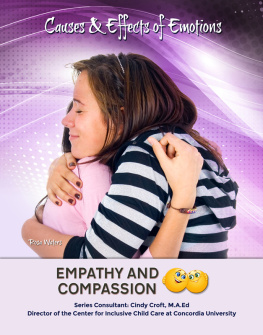
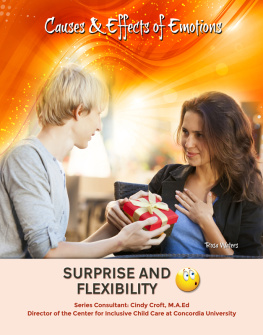
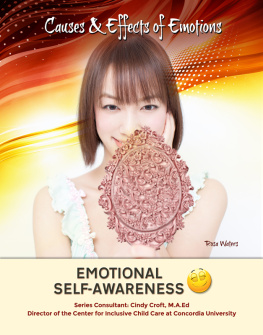
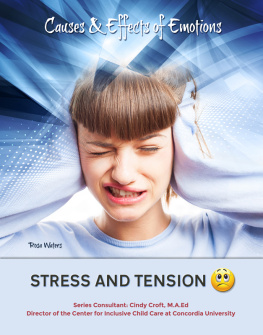

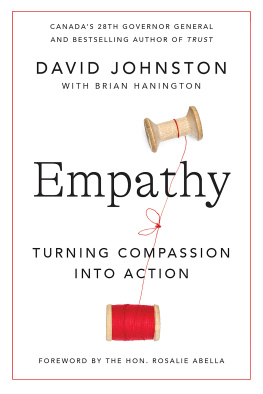

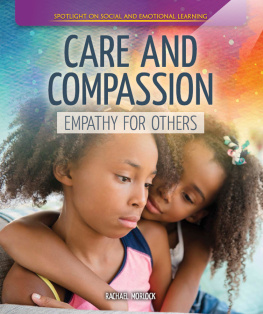
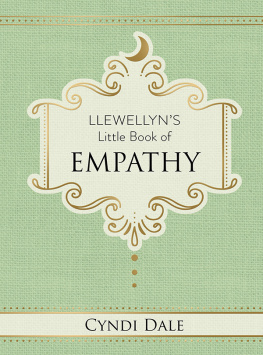

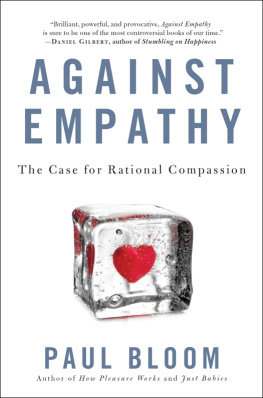
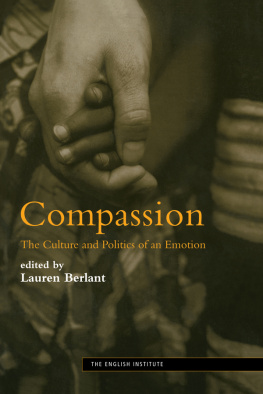

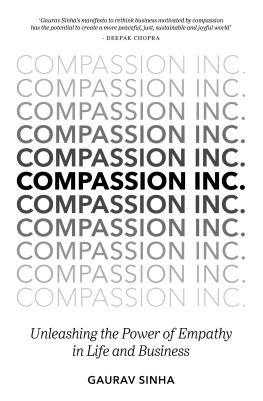
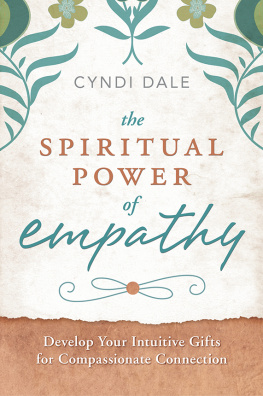

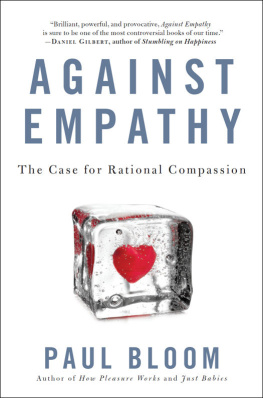





 psychologists: People who are experts on emotions and the human mind.
psychologists: People who are experts on emotions and the human mind.
 Empathy and compassion are just one kind of emotion. Theyre a lot like love and af fection, not so much like anger and hatred. But all emotions, positive and negative, have some things in common. Our feelings take place in our brains. Scientists say that all emotions are impulses within our brain cells that move us to action. Our emotions are triggered by something outside usand then they prompt us to behave in certain ways. Those behaviors include smiling, shouting, laughing, and crying. They also include getting in f ightsand reaching out to help another person. Humans developed emotions because in one way or another, they helped us survive. Being happy or sad, angr y or surprised, compassionate or jealousthose are all survival mechanisms.
Empathy and compassion are just one kind of emotion. Theyre a lot like love and af fection, not so much like anger and hatred. But all emotions, positive and negative, have some things in common. Our feelings take place in our brains. Scientists say that all emotions are impulses within our brain cells that move us to action. Our emotions are triggered by something outside usand then they prompt us to behave in certain ways. Those behaviors include smiling, shouting, laughing, and crying. They also include getting in f ightsand reaching out to help another person. Humans developed emotions because in one way or another, they helped us survive. Being happy or sad, angr y or surprised, compassionate or jealousthose are all survival mechanisms.